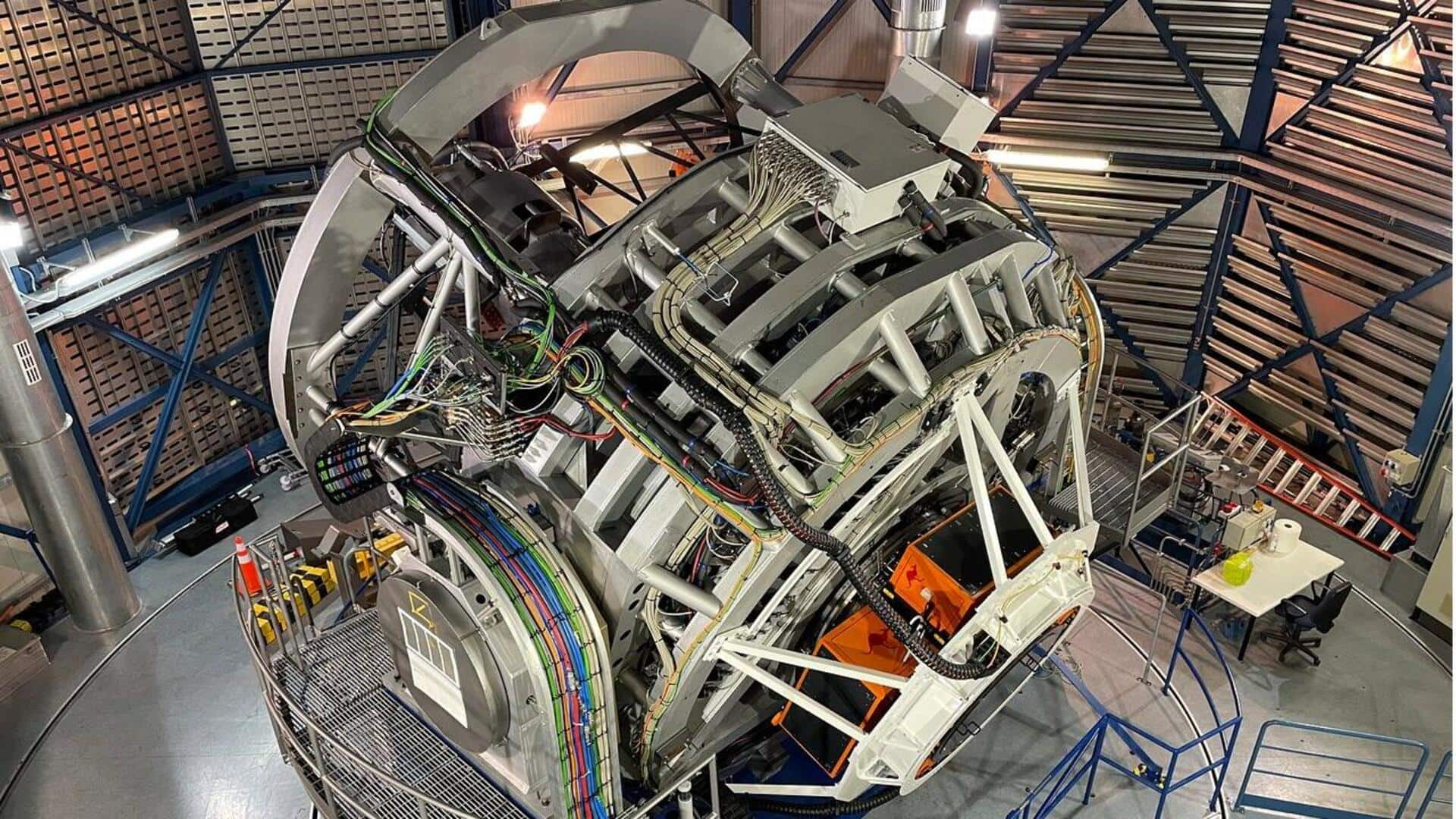
What makes the 4MOST telescope so special?
What's the story
The 4-meter Multi-Object Spectroscopic Telescope (4MOST) has successfully captured its first light. The achievement was recorded on October 18, 2025, at the European Southern Observatory's (ESO) Paranal Observatory in Chile. This moment marks a major milestone in the telescope's journey and prepares it for a scientific exploration of the universe.
Spectroscopic prowess
4MOST's unique capabilities
Unlike traditional telescopes that capture images, 4MOST records spectra. This means it can break down the light from each object into its individual color components. The telescope can split the light of 2,400 celestial objects at once into as many as 18,000 colors. This capability will allow astronomers to investigate the chemical composition and properties of these objects in great detail.
Goals
Scientific goals of the telescope
Once fully operational, 4MOST will study the formation and evolution of stars and planets, galaxies, black holes, and the universe itself. The telescope will create a catalog of physical parameters such as temperatures, chemical compositions, and velocities of tens of millions of objects across the Southern sky. Development for this project began in 2010 with plans for it to operate for at least another 15 years.
Facility details
The team behind the project
The Leibniz Institute for Astrophysics Potsdam (AIP) leads the 4MOST Consortium that designed and will operate the facility. AIP has contributed to various aspects of the facility, including its wide field camera with six lenses up to 90cm in diameter, guiding and focusing system, and fiber system containing more than 2,400 glass fibers. Each fiber is as thin as a human hair.
Initial results
'Data looks fantastic from the start'
The first light spectra from 4MOST have been obtained, with Principal Investigator Roelof de Jong expressing excitement over the data quality. He said, "It is incredible to see the first spectra from our new instrument. The data looks fantastic from the start and bodes well for all the different science projects we want to execute."
Research implications
'Opening a new chapter in sky surveys'
Professor Dr. Matthias Steinmetz, Scientific Director of AIP, highlighted the significance of 4MOST's first light observations. He said, "With the First Light of 4MOST, we are opening a new chapter in sky surveys." The telescope's design allows it to observe a large field of view and investigate many different objects simultaneously in great detail.